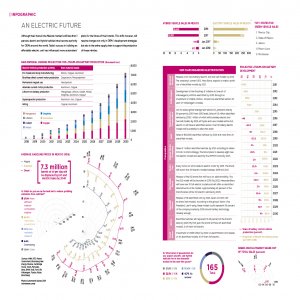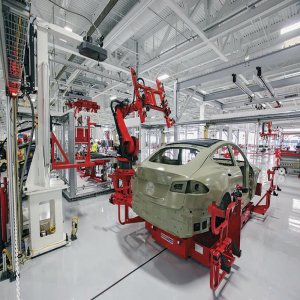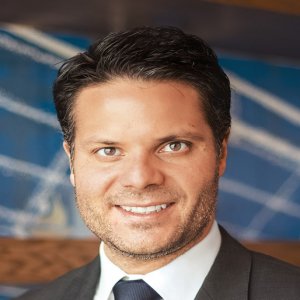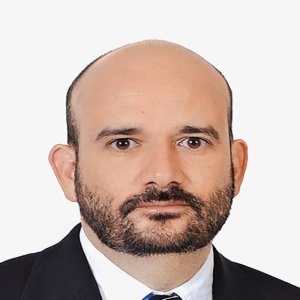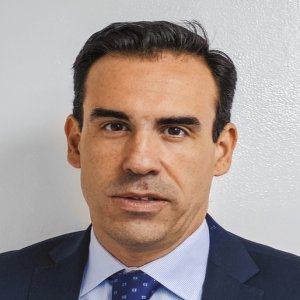A Success Story in Industrial Development

STORY INLINE POST
Q: How has Guanajuato Puerto Interior advanced in its logistics capabilities?
A: One of our goals was to have a free-trade zone (FTZ) within Guanajuato Puerto Interior to help SMEs make their transport operations more efficient and today, this FTZ is a reality. At the same time, we rearranged Ferromex’s work layout, helping the company grow its transportation capacity to 80,000 containers per year from 38,000 containers. Lastly, we started operations at the Logistics Research Center in collaboration with ITESM, which will allow us to create better synergies between the center of the country and ports such as Manzanillo. As a result, all customs operations will be performed directly at Guanajuato Puerto Interior instead of at the border. Our priority at the moment is to work with the government in Colima to digitalize our process and avoid fines to companies for lock violations in containers that have not been liberated by the customs office.
Q: How have you advanced in terms of occupation and what are your expectations regarding client attraction?
A: We are already showing signs of over-capacity. So far, two of our four parks are working at 100 percent capacity, the third is at 80 percent and the last is now 50-percent booked. The Sky Plus aerospace park is also advancing according to schedule; the company in charge of its development has already laid out the drainage and electrical infrastructure and is now working on pavement installation. From our side, we already constructed a bridge that connects Sky Plus’ 80ha with the rest of Puerto Interior and we expect to begin offering the available slots at this park by the end of 2019.
Q: How has Guanajuato Puerto Interior developed its operations to ensure tenant satisfaction?
A: We have a clearly defined retention strategy. Guanajuato Puerto Interior tries to continuously improve its working standards in collaboration with a civil association called Guanajuato Puerto Interior Bodies (OGPI). We created this association in 2016 to have an entity in charge of Puerto Interior’s maintenance and its members decided to also appeal to the Guanajuato government to ask for permission to manage the complex’s own services. As a result, we now have 99 percent operability in our lighting, water, and electricity services, which means tenants are pleased with the results. Today, we have 120 companies from 18 countries operating in 1,500ha with 17,000 workers, along with the IPN training 2,427 students in five different engineering majors. Investors have found advantages in Puerto Interior that they cannot find anywhere else in the country, even though other municipal governments might give away the land so companies establish their operations.
Q: What strategies have you implemented to attract potential tenants?
A: We do not sell land lots unless there is a clear development project for the short term. Companies might have future expansion plans and buy the land in advance but they must have a defined project in mind from the start. Additionally, we only allow for construction projects that cover up to 50 percent of the company’s allotted space. We do not allow cars to park on the public roads and this regulation ensures the company has more than enough parking space for its visitors while dedicating 10 percent of its space to green areas. These are harsh measures but they have ensured the functionality of the project.
In terms of projects, besides our own subdivision, we also have industrial park managers, such as Vesta, Vynmsa and Advance Real Estate that sublet their facilities. This has helped many Tier 2 and Tier 3 companies to establish their operations at Guanajuato Puerto Interior thanks to a soft-landing program. We also have a build-to-suit portfolio for more specialized companies that demand facilities with clear specifications. Just-in-time demands have also been a crucial factor in attracting more companies to Guanajuato Puerto Interior. Many of our latest tenants have had to move their operations from the north of the country to more effectively supply the OEMs in Guanajuato.
Q: What is your role in attracting more investment to Guanajuato Puerto Interior and to Guanajuato?
A: Guanajuato Puerto Interior is not acting alone in the promotion of Guanajuato’s industrial capabilities. Thanks to the strategy implemented by the state government, there are now 35 parks throughout the state that offer an attractive option for investors to bring their operations. Unlike other states, our industrial activities are distributed among several cities because thanks to Guanajuato Governor Miguel Márquez Márquez, the industry has tried to take work to where the population needs it. The government has its own investment promotion agency but Puerto Interior has served as an example of good practices and the results that this industrialization strategy has yielded in Guanajuato.
Q: What would you consider the main advantages Guanajuato can offer to potential investors?
A: One of the main advantages in Guanajuato has been continuity between state administrations. This has instilled investors with confidence that even without a signed agreement, the government will fulfill its obligations regardless of the person in charge. Infrastructure has also proven a huge benefit, considering that most of the best highways in the country are in Guanajuato. Additionally, we are strongly integrated with the rest of the Bajio region, which means that whatever areas of opportunity exist in Guanajuato can be covered by Queretaro, San Luis Potosi or Aguascalientes and vice versa. Companies that invest in Guanajuato know that they can supply Nissan in Aguascalientes and BMW in San Luis Potosi.
Q: What is your position on the potential saturation of the Bajio?
A: We do not think the region is saturated. Companies need to be where their clients and suppliers are and the challenge for the region is to supply enough talent to meet the industry’s demands. The state will have to attract people from other regions and develop housing complexes close to where companies are opening new sites. At the same time, these people will have to undergo a training process to understand how automotive companies work and how each player manages its own operations.
The Federal Government’s strategy of developing Special Economic Zones (ZEEs) has been attractive for some investors, but automotive companies are still afraid of moving to areas that have no experience with their culture and way of working. Investors prefer to keep investing in developed automotive hubs and bringing human capital from unindustrialized regions. We have to see this as a regional development strategy that will result in migration and economic development for the entire country.

